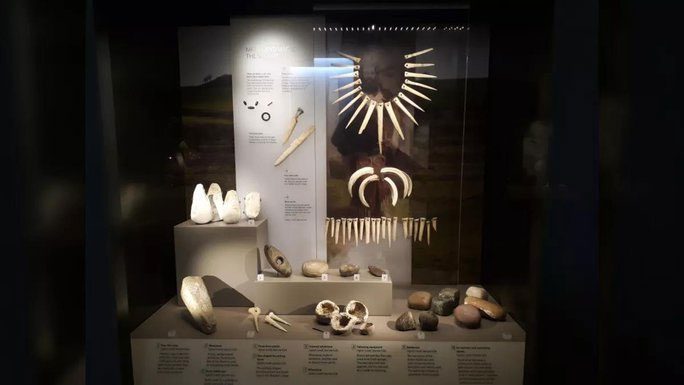A 4,000-year-old burial treasure belonging to a wizard, excavated near the famous Stonehenge site in England during the 19th century, may be far more valuable than previously imagined, following a discovery that could overturn everything.
According to Live Science, a recent examination of the famous treasure from the Upton Lowell burial mound, displayed at the Wiltshire Museum in Devizes (England), revealed traces of gold on the surfaces of the artifacts.

Treasure “funerary goods of the wizard” displayed at the Wiltshire Museum – (Photo: Antiquity).
The hypothesis that these strange stone artifacts were ritual tools of a wizard has quickly been shaken. He could be someone far more significant to history, such as a jeweler.
With the 4,000-year-old burial site of this mysterious “wizard” and the peculiar funerary goods unearthed, the notion that he might be a jeweler would mark a significant milestone in history, suggesting that goldsmithing skills could have developed earlier and to a higher degree than previously thought.
Evidence of this would be the peculiarity of the stone tools that archaeologists must admit they do not understand, leading to the assumption two centuries ago that they must be mysterious instruments used in the rituals of a wizard.
Another hypothesis is that the owner of these peculiar funerary items may represent multiple roles during the inception of the Bronze Age.
The discovery of gold—both literally and metaphorically— from this long-dormant treasure in the museum has just been published in the scientific journal Antiquity; with a concluding statement still shrouded in mystery: “The items in the grave are not just a representation of a person’s identity.”


















































